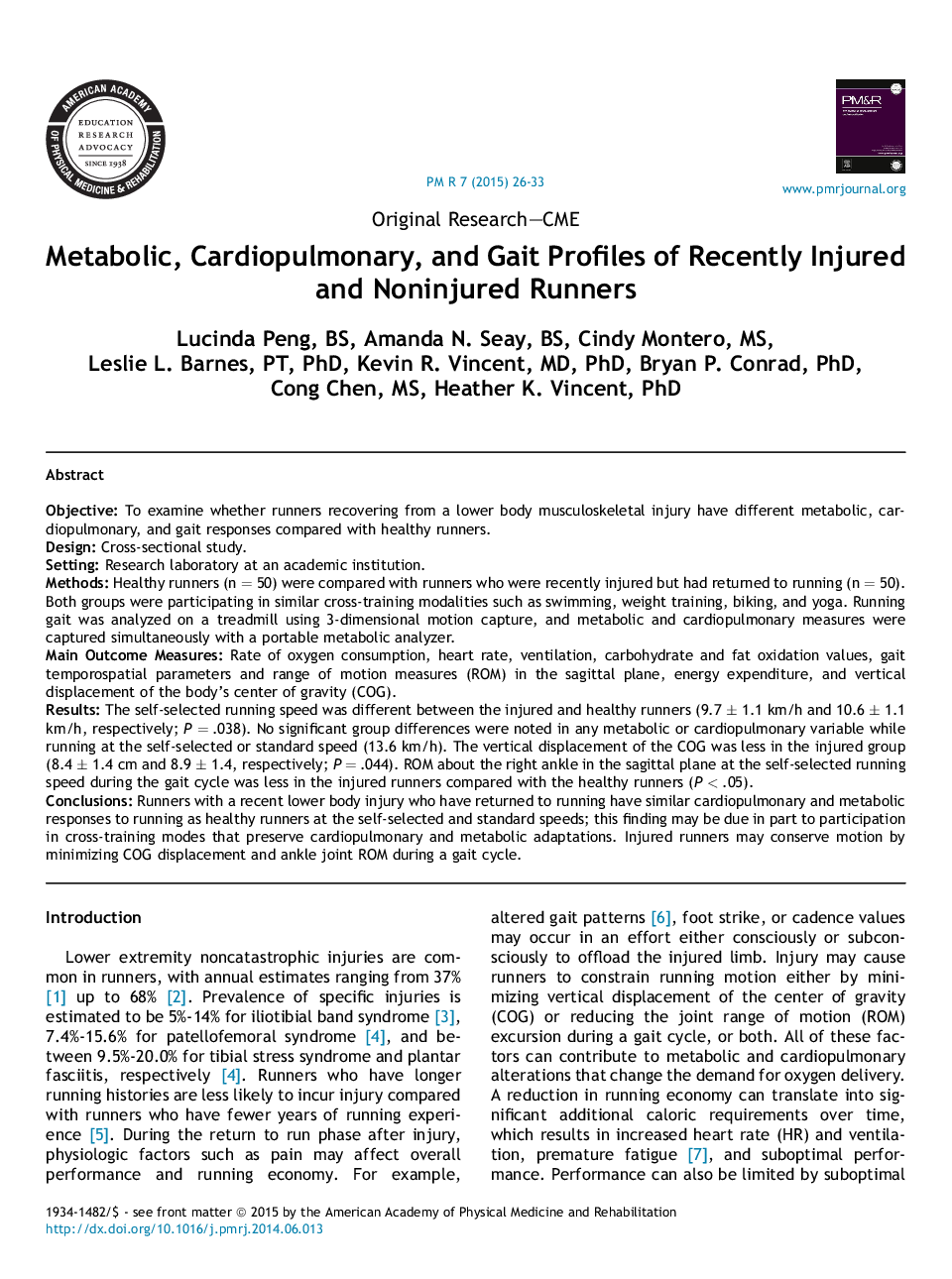| کد مقاله | کد نشریه | سال انتشار | مقاله انگلیسی | نسخه تمام متن |
|---|---|---|---|---|
| 2715606 | 1145316 | 2015 | 8 صفحه PDF | دانلود رایگان |
ObjectiveTo examine whether runners recovering from a lower body musculoskeletal injury have different metabolic, cardiopulmonary, and gait responses compared with healthy runners.DesignCross-sectional study.SettingResearch laboratory at an academic institution.MethodsHealthy runners (n = 50) were compared with runners who were recently injured but had returned to running (n = 50). Both groups were participating in similar cross-training modalities such as swimming, weight training, biking, and yoga. Running gait was analyzed on a treadmill using 3-dimensional motion capture, and metabolic and cardiopulmonary measures were captured simultaneously with a portable metabolic analyzer.Main Outcome MeasuresRate of oxygen consumption, heart rate, ventilation, carbohydrate and fat oxidation values, gait temporospatial parameters and range of motion measures (ROM) in the sagittal plane, energy expenditure, and vertical displacement of the body's center of gravity (COG).ResultsThe self-selected running speed was different between the injured and healthy runners (9.7 ± 1.1 km/h and 10.6 ± 1.1 km/h, respectively; P = .038). No significant group differences were noted in any metabolic or cardiopulmonary variable while running at the self-selected or standard speed (13.6 km/h). The vertical displacement of the COG was less in the injured group (8.4 ± 1.4 cm and 8.9 ± 1.4, respectively; P = .044). ROM about the right ankle in the sagittal plane at the self-selected running speed during the gait cycle was less in the injured runners compared with the healthy runners (P < .05).ConclusionsRunners with a recent lower body injury who have returned to running have similar cardiopulmonary and metabolic responses to running as healthy runners at the self-selected and standard speeds; this finding may be due in part to participation in cross-training modes that preserve cardiopulmonary and metabolic adaptations. Injured runners may conserve motion by minimizing COG displacement and ankle joint ROM during a gait cycle.
Journal: PM&R - Volume 7, Issue 1, January 2015, Pages 26–33
